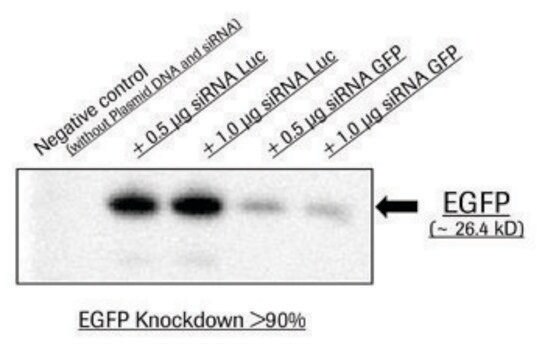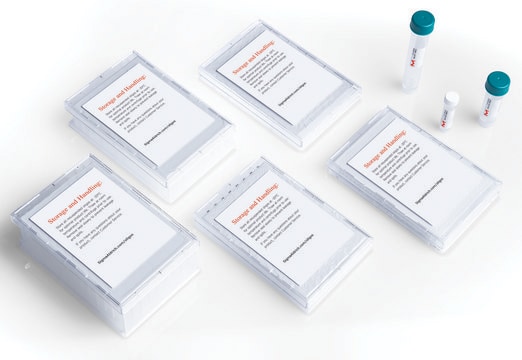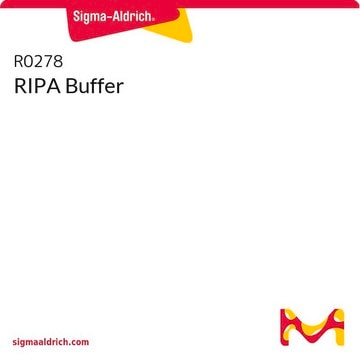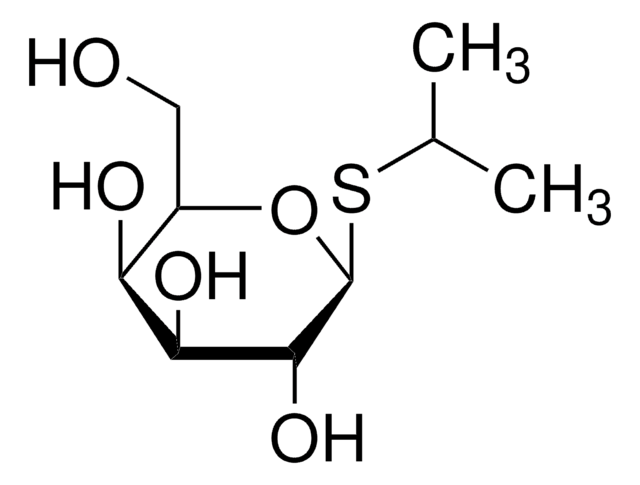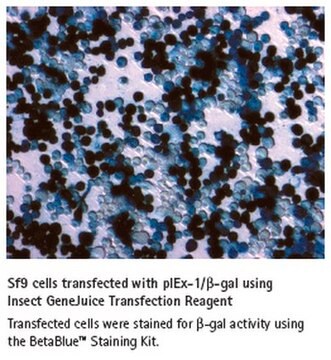추천 제품
Grade
Molecular Biology
Quality Level
양식
liquid (aqueous solution)
사용
1 mL (suitable for 165 transfections)
포장
pkg of 0.4 mL (06365779001)
pkg of 1.0 mL (06365787001)
pkg of 5 × 1.0 mL (06365809001)
제조업체/상표
Roche
기술
transfection: suitable
저장 온도
2-8°C
일반 설명
애플리케이션
X-tremeGENE™ 9 DNA Transfection Reagent is well suited for cellular analysis applications such as:
- Expression of recombinant proteins for functional analysis.
- Physiological studies of metabolic pathways.
- Analysis of regulatory sequences using reporter gene assays.
- Gene expression assays.
- Cancer research studies.
- Target evaluation.
특징 및 장점
- Generate physiologically relevant results using a reagent with extremely low cytotoxicity for maximum post-transfection cell viability.
- Save time and eliminate multiple handling steps; simply dilute X-tremeGENE 9 DNA Transfection Reagent, incubate with plasmid DNA, and pipet the mixture directly onto your cells (with or without serum).
- Avoid time-consuming optimization procedures in commonly used cell lines.
품질
물리적 형태
기타 정보
법적 정보
관련 제품
신호어
Danger
유해 및 위험 성명서
Hazard Classifications
Eye Irrit. 2 - Flam. Liq. 2
Storage Class Code
3 - Flammable liquids
WGK
WGK 1
Flash Point (°F)
334.4 °F
Flash Point (°C)
168 °C
이미 열람한 고객
문서
Automation is used for many applications to reduce variation caused by manual handling and to obtain reproducible results in high-throughput assays. High-throughput applications, such as knockdown studies or target screenings, often include cell transfection.
Small inhibitory RNAs (siRNAs) have become the focus of interest in many laboratories. For the first time, these molecules offer an easy way to knock down the expression of selected genes in mammalian cells without having to resort to classical gene knockout techniques.
Transfection is the introduction of DNA, RNA, or proteins into eukaryotic cells and is used in research to study and modulate gene expression. Thus, transfection techniques and protocols serve as an analytical tool that facilitates the characterization of genetic functions, protein synthesis, cell growth and development.
This brief webinar provides an overview of what transfection is and the methods that are used to introduce DNA or RNA into eukaryotic cells.
프로토콜
Plate cells approx. 24 hours before transfection making sure cells are at optimal concentration (70 – 90 % confluency).
Plate cells approx. 24 hours before transfection making sure cells are at optimal concentration (70 – 90 % confluency).
관련 콘텐츠
Browse our convenient transfection reagent selection guide to match the best reagent for your specific cell line and application needs.
자사의 과학자팀은 생명 과학, 재료 과학, 화학 합성, 크로마토그래피, 분석 및 기타 많은 영역을 포함한 모든 과학 분야에 경험이 있습니다..
고객지원팀으로 연락바랍니다.

